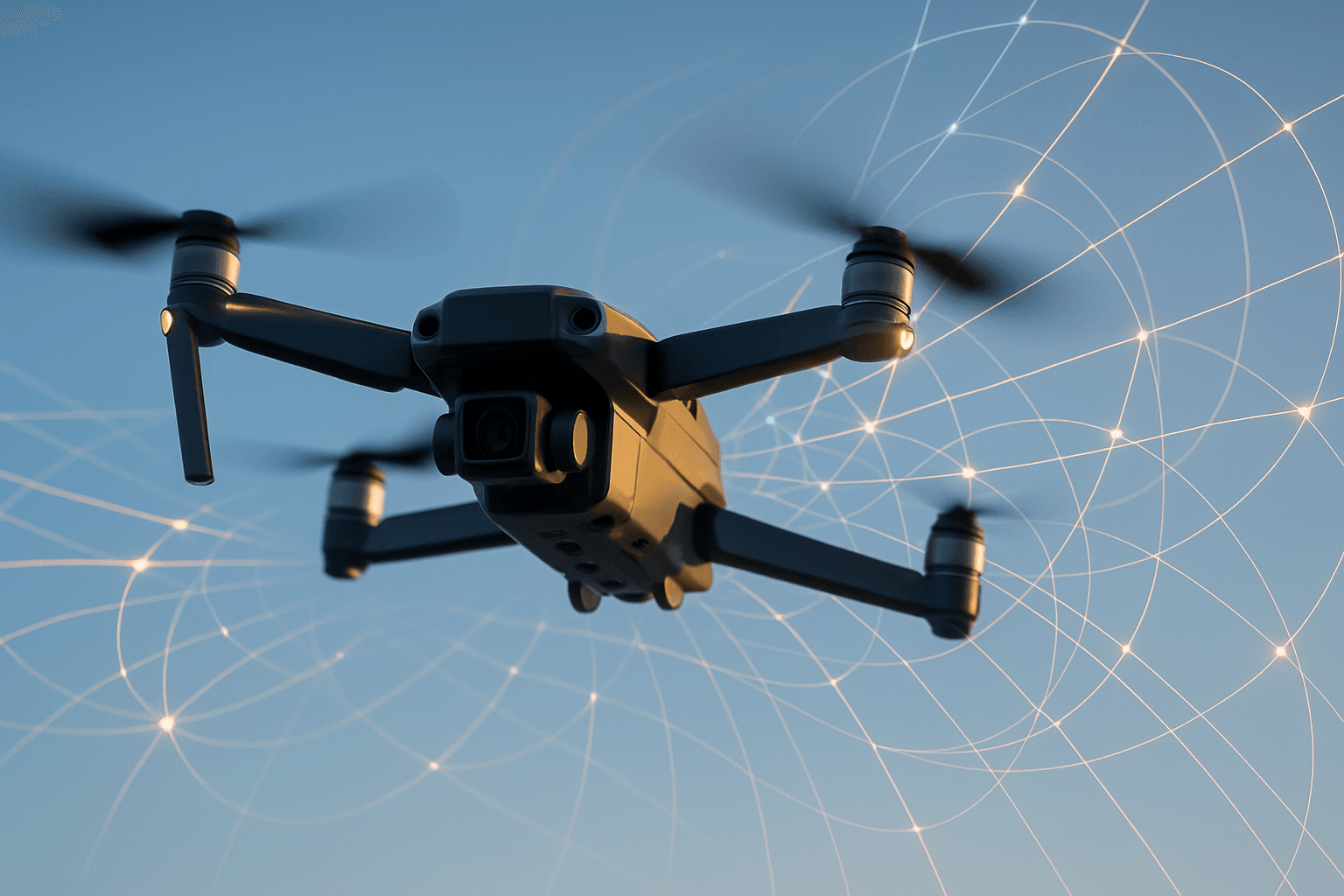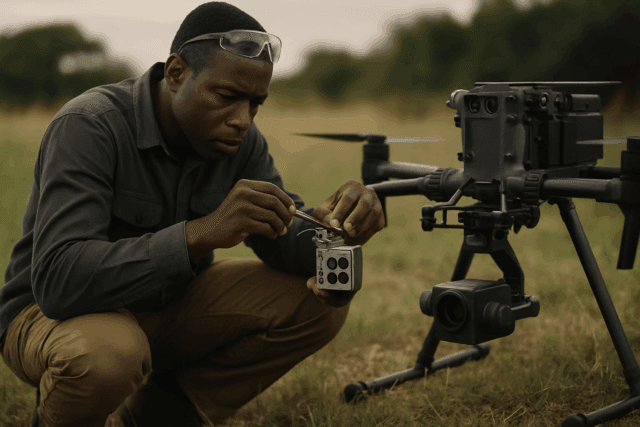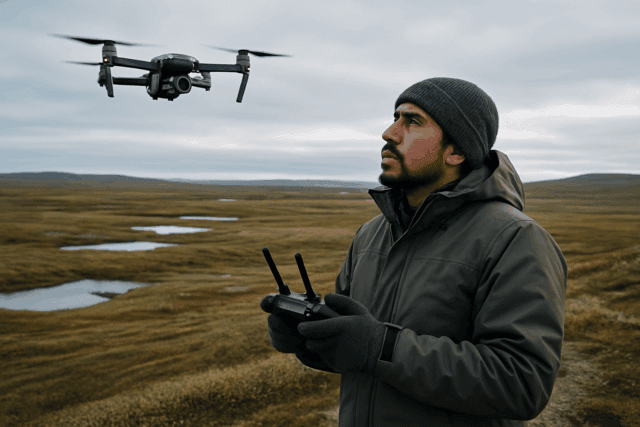Drones have become increasingly popular in recent years, used for everything from aerial photography to infrastructure inspection. As drone technology advances, understanding the frequencies they use is crucial for safe and legal operation. This guide provides a comprehensive overview of drone frequencies in the UK, regulations, potential interference issues, and how to mitigate them.
Understanding Drone Frequencies
Drones communicate with their controllers using radio frequencies (RF), primarily in the microwave spectrum (300 MHz to 3000 GHz). Different frequency bands offer varying advantages and disadvantages in terms of range, data transmission rates, and interference resistance.
Common Frequency Bands
Here are the most common frequency bands used by drones:
2.4 GHz Band (2400 MHz – 2500 MHz): This band offers a good range but is prone to congestion due to widespread use by Wi-Fi networks, Bluetooth devices, and other consumer electronics.
5.8 GHz Band (5725 MHz – 5875 MHz): Provides better resistance to interference than 2.4 GHz but has a shorter range.
433MHz and 915MHz: Amateur-built drones may use these frequencies, potentially extending their range but limiting video feed quality and communication.
978 MHz: This frequency is used for drone safety devices called Universal Access Transceivers (UAT), which broadcast the drone’s position to other aircraft.
UK Regulations and Legal Limits
In the UK, drone operators must adhere to specific regulations regarding frequency use and power levels to avoid interfering with other services.
- Ofcom is the regulatory body responsible for managing the radio spectrum in the UK.
- Civil Aviation Authority (CAA) sets the air safety requirements and other regulations for drone operations.
As of March 11, 2025, Ofcom made the 978 MHz spectrum available for airborne transmission onboard drones, facilitating the use of UATs. At the same time, Ofcom ceased licensing the 978 MHz spectrum for Programme Making and Special Events (PMSE) users in outdoor settings but expanded the range of other frequencies available to PMSE users both indoor and outdoor, including 1015-1016 MHz, 1044-1045 MHz, 1075-1076 MHz, and 1104-1105 MHz.
Licensing:
- Most consumer drones using low-power 2.4 GHz and 5 GHz equipment do not require an Ofcom license.
- Commercial or advanced users, especially those intending to operate drones at long distances or Beyond Visual Line Of Sight (BVLOS), likely need a license from Ofcom and possibly the CAA. A UAS Operator Radio license, costing £75 annually, authorizes the use of radio equipment on drones and covers all drones operated by a company or individual in the UK.
Power Limits:
- 2.4GHz: Limited to 10mW transmission power for video use to avoid interference with Wi-Fi and Bluetooth services.
- 5.8GHz: Limited to 25mW.
Recent Updates in UK Drone Frequencies
The UK Civil Aviation Authority (CAA) and Ofcom have recently made significant changes regarding drone frequencies:
- 978 MHz Spectrum Availability: As of March 2025, the 978 MHz frequency is available for drone safety devices (UATs), which enhance situational awareness by broadcasting the drone’s position to other aircraft. This supports longer-distance operations, including BVLOS.
- Changes for PMSE: Licensing for outdoor Programme Making and Special Events (PMSE) between 976.5 to 979.5 MHz will no longer be granted. However, indoor PMSE use will continue to be licensed. Additional frequencies are available for PMSE use: 1015-1016 MHz; 1044-1045 MHz; 1075-1076 MHz; and 1104 to 1105 MHz.
These changes align the UK with international standards and facilitate easier cross-border drone operations.
Dealing with Interference
Radio frequency interference (RFI) can disrupt drone communication, leading to loss of control or reduced data transmission quality.
Sources of Interference
- RF Congestion: The 2.4 GHz and 5.8 GHz bands are commonly used by Wi-Fi networks, Bluetooth devices, and other electronics, causing congestion.
- Electromagnetic Interference (EMI): Strong electromagnetic signals from power lines or other sources can disrupt radio waves.
- Physical Obstructions: Buildings, trees, and terrain can block or weaken signals.
- Weather Conditions: Atmospheric conditions can affect signal propagation.
Strategies to Minimize Interference
- Choose Less Crowded Frequency Bands: Opt for the 5.8 GHz band or other less congested bands like 900 MHz to avoid interference from common devices.
- Frequency Hopping: Use drones with automatic frequency hopping to switch channels and avoid crowded frequencies.
- Directional Antennas: Employing directional antennas can help focus the signal and reduce interference.
- RF Filtering and Shielding: Use RF filters on drones and control systems to block unwanted frequencies.
- Fly in Open Areas: Avoid flying in areas with many buildings, trees, or power lines.
- Maintain Line of Sight: Keep a clear line of sight between the drone and controller.
Signal Jamming
Signal jamming is a deliberate attempt to disrupt drone operations by overpowering communication signals. GPS jamming blocks the drone’s ability to receive satellite signals, affecting navigation and automated functions.
How to protect against jamming:
- Anti-Jamming Technology: Utilize drones equipped with anti-jamming technology.
- Awareness: Be aware of the potential for jamming attacks, especially in sensitive areas.
- Failsafe Mode: Ensure the drone has a reliable failsafe mode that activates in case of signal loss.
Radio Scanner Frequencies for Drones in the UK
While a comprehensive list of specific radio scanner frequencies for drones in the UK may require a subscription to services like Radio Scanner Frequencies for The Drones UK, it’s important to understand the general frequency ranges used. Scanner frequencies often align with the common drone operating frequencies:
- 2.4 GHz (2400 MHz – 2500 MHz)
- 5.8 GHz (5725 MHz – 5875 MHz)
- 978 MHz (for UAT devices)
Resources for Drone Operators in the UK
- Ofcom: For information on radio frequency regulations and licensing.
- Civil Aviation Authority (CAA): For air safety requirements and drone operating regulations.
- ARPAS UK: For industry news and updates.
Conclusion
Understanding drone frequencies, adhering to UK regulations, and mitigating interference are crucial for safe and legal drone operations. By staying informed and employing best practices, drone pilots can ensure reliable communication and minimize the risk of accidents or violations.





